Building an ERP System from Scratch
The more complex the company, the more business management tools are required to coordinate all processes. By 2021, more than half of businesses that had implemented an ERP system could easily manage their accounting, logistics, inventory, and staff.
Companies that had not yet implemented ERP systems, on the other hand, experienced process difficulties and financial losses.
ERP solutions enable businesses to better manage their work processes, saving time and money.
This guide will share our expertise in ERP systems and how to create ERP software that meets all business requirements.
ERP Systems 101: Introduction to ERP Development
Before we discuss the benefits of an ERP management system for business, we must first understand what it is and why medium and large companies require ERP systems for their work processes.
What Is an ERP System?
ERP software is a system that allows a company to standardize and simplify business processes across multiple departments.
It can also automate internal company operations and securely store and transmit data to improve planning and decision making.
ERP Market Overview
In recent years, an enterprise resource planning system has lost its monopoly on multinational corporations. Almost all modern businesses of any size require an efficient system for management, product and project monitoring.
The global ERP software market is expected to reach $97.15 billion by 2024, with a compound annual growth rate of nearly 0.8 percent.
ERP System Year-by-Year Overview
| 2018 | 2019 | 2020 | 2021 | 2022 | |
| Top industries | Manufacturing Distribution | Manufacturing Information Technology | Manufacturing Information Technology | Manufacturing Information Technology | Manufacturing Information Technology Marketplaces |
| ERP market revenue | $93.4 B | $94.05 B | $94.71 B | $95.37 B | $96.04 B |
| Allocated Annual Company Budget | 36% stayed on budget | 55% stayed on budget | 62% stayed on budget | 64% stayed on budget | 40% stayed on budget |
| Business Process Management (BPM) Focus | 49% improved most processes | 30% improved most processes | 37% improved most processes | 50% improved most processes | 55% improved most processes |
| Top Reasons to Implement | Organization issues | Organization issues | Organization issues Real-time data access | Organization issues Real-time data access | Organization issues Real-time data access Cost-effective legacy |
ERP System Functionality and Must-Have Capabilities
Enterprises and corporations can use the ERP templates as a universal dashboard for the following areas:
- Marketing
- HR
- Financial management
- Project management
- Compliance and quality control of production
- Automated data reporting and business analytics
As a rule, an ERP system can consist of modules such as:
Human Resources Module
This module can collect data from your employees, create job profiles, track work hours and schedules, and generate a visual skills diagram. Many businesses also use these templates to track payroll and labor efficiency, as well as course or medical service reimbursement.
Finance and Accounting Module
This module automates payroll processing and tax filing, as well as account closing, reservation tracking, and core financial and accounting functions. All of these functions provide critical insights for reducing financial risk.
Customer Relationship Management Module
ERP systems can help large businesses and corporations improve sales efficiency and customer service quality. It is possible with the assistance of information about:
- customers and potential audience
- tracking communication history
- information about purchases and transaction call history
- studying data about visitors’ preferences and hobbies, etc.
Supply Chain Management Module
This module enables the automation of the supply chain and the optimization of the flow of product or service supplies from the manufacturer or supplier to end-users.
Inventory Module
This module is used by a modern company to track product inventory, identify it, manage inventory and reports, and determine uniqueness by serial numbers in various contentious situations with customers. Almost all advanced ERP solutions include a module like this.
Sales Module
This tool regulates sale data, collects and analyzes various requests, compiles offers, sends invoices, and verifies transactions from customers or contractors.
Purchase Module
Purchase modules can help to automate and analyze all internal purchases that ensure the inner life of the company. It can also track and explore:
- supply of raw materials for production
- existing services on the market
- analysis of quotations
- vendor listings
- purchase orders
These analytic features became possible because an ERP system supports marketing and management activities with AI and BI.
Distribution Module
This module aids in the automation of features such as production planning, specification tracking, production progress monitoring, and compiling and analyzing actual production.
All those modules help control and automatically regulate all of the company’s processes.
The choice of an ERP system module depends on the business industry and necessary in-built features. Each industry must have specific modules that will not overload the system.
For example, the real estate industry will need the following resource modules:
- HR module, which operates with workers profiles and analyzes their activities
- Sales module, which regulates the sale management activities and tracks real-time reports
- Inventory module if the organization has property equipment
Who Would Benefit From Building an ERP System?
An ERP system is needed by medium and large businesses that effectively organize their activities.
Panorama ERP created research that shows ERP systems’ popularity among different industries in 2022, such as:
- Manufacturing
- Information Technology
- Distribution
- Public Sector
- Professional Services
- Retail
- Healthcare
Choosing an ERP system is difficult for businesses all over the world. The system is expensive, whether it is ready-made or custom-made, with varying functionality, built-in features, and design.
Many businesses are unable to decide which ERP system to build due to a lack of system awareness.
Advantages of ERP Software
Over the last two years, the use of ERP systems has significantly altered enterprise business planning processes.
With the help of ERP, businesses of all sizes were able to save 20% on their business budgets. So, let’s take a closer look at the benefits of implementing an ERP system.
Optimization of Business Processes
Using HR, supply chain management, and inventory modules, business process optimization enables enterprises and mid-sized businesses to save time and automate daily business tasks. More importantly, it will relieve the company of routine paperwork and reduce human-factor errors.
Real-Time Data Access
Companies will make more effective decisions with accurate and timely access to reliable information thanks to constant reporting and real-time data features.
Better Business Collaboration
Cooperation between business partners provides an opportunity for all business participants to exchange information and activate high-quality partnerships between various parties. Using an ERP system, most businesses increased their collaboration productivity by 30%.
Cost Savings on Legacy Support
If a company requires legacy support for their operations, an ERP system can be extremely beneficial.
For example, an ERP system stores all records about a product’s uniqueness, making it easier to provide better product protection and prove that the product was the first to enter the market or is unique in comparison to others.
By the way, by 2021, more than 65 percent of small businesses will have benefited from the use of ERP legacy services.
Reduction of Unnecessary Operations
The number of unnecessary operations in medium or large-sized businesses can quickly grow. With the help of Artificial Intelligence and Business Intelligence opportunities, an ERP system can significantly assist companies in analyzing what is required for business planning and freeing up space for priority tasks and their time.
Improved Work Performance
Labor productivity is an important criterion that will allow the company to properly analyse each employee’s effectiveness, develop individual growth plans, and improve cooperation effectiveness.
Many businesses produce lengthy reports on their operations. In this case, the ERP system can now calculate the effectiveness of the business process and correctly organize the procedure to achieve a good balance of time and work.
Disadvantages of ERP Software Development
An ERP tool, like any other resource system, has drawbacks. Let’s look at the stumbling blocks that can arise when integrating an ERP system into various businesses.
Cost
It is not cheap to install an ERP system. In 2021, installing an ERP system could consume up to 40% of the budget. Of course, if you have a small company with a few employees, this is something to consider. However, the payback of this resource system remains exceptionally high for medium and large businesses.
Staff Training
To ensure that ERP system procedures run as smoothly as possible, employees must be trained on how to deal with them, how to process reports correctly, and how frequently this must be done. Without an experienced vendor, ready-made resource-like templates appear too complicated, and they do not want to spend money on staff training. Furthermore, this path may lead to increased costs and decreased competitiveness in the consultant market.
System Complexity
Some ERP systems are overly complex.
This is common for ready-made ERP products, which may initially entice businesses with their capabilities and delivery but then cause confusion about its management and proper workflow.
In this case, the winning option is a custom ERP product, which will avoid system volume issues by fully meeting the needs of the business and building priorities.
However, no matter how good an ERP system is, its benefits will not be apparent right away, but will be apparent for a long time after the ERP tool is integrated.
The final stage of implementation is dependent on the workforce’s abilities and skills and includes training and preparation to correctly apply the templates.
Before installing such a system, companies need to understand its goals and further develop their time strategies.
Out-of-the-Box vs. Custom-Made ERP Systems
The ERP guide provides two options: a ready-made resource planning system or a custom-made solution. Before implementing an ERP guide, a company should research the benefits of each solution.
Third-Party Solutions
Purchasing an ERP system from a supplier is an out-of-the-box option. The company pays a single entry fee to obtain a license or a subscription for a set period of time.
According to the Statista 2021 Survey, the top three ERP system vendors on the market are Deltek, Microsoft, and Workplay.
However, this is not an exhaustive list of suppliers from which businesses can select for their projects.
Custom ERP Solutions
Companies can also implement custom ERP systems that are tailored to the needs of a specific company and do not include unnecessary functionality.
A tailored ERP solution is more expensive than off-the-shelf products, but a company receives significant benefits such as:
Customization
Custom ERP solutions include all of the necessary business functions and planning, indicating that the functionality is complete. This saves a lot of time studying, and businesses pay more for what they won’t use in the future.
Essential Functions
Enterprises with experienced ERP services can select practical functionality that will help them analyse the web app process more clearly and make faster decisions.
When developing an ERP system, businesses choose custom ERP solutions and receive over 91 percent satisfaction.
However, companies need to consider the disadvantages of building bespoke ERP systems.
Longer Creation Time
Because a custom ERP system solution must be developed, the system’s implementation time will be longer than that of a ready-made web app solution. And it is at this point that enterprise companies must determine whether they can wait and for how long.
Development Cost
A customized ERP solution will be more expensive. However, it will be created entirely for a specific company, an industry in which it operates, and will be thoroughly tailored to employees and their customers’ needs.
ERP Software Development: Step-By-Step Process
While developing an ERP system, a company should follow a step-by-step building process.
Clarifying Your Ideas and Expectations
An ERP system will be ideal for a company if all its participants in the business building process are aware of:
- ERP system’s operation and its functionality
- How an ERP helps run various web enterprise business solutions effectively
- ERP expectations and their timelines
All parties involved in the development of the company’s project must share the same vision of action and movement. Only then will the process run smoothly and effectively. Each company should define the following issues clearly:
1) What are the initial goals of the project?
2) Why does the project need an enterprise system to build?
3) What functions and needs of the company should the enterprise resource system cover?
Assume the business owner is unsure of what features are required or the most profitable business solutions. In that case, the experienced vendor will assist in determining and directing the Discovery Phase. The discovery phase is the first stage of a product development cycle (it can also be part of a product development roadmap) in which business owners must do things like:
- Extensive data analysis of the product idea, its prospects, and its web market needs
- Estimation of product requirements and the tech stack to follow
- Evaluation of all the possible project development challenges and best suitable solutions
As a result of the discovery research, a client receives an SRS (Software Requirements Specification) document that includes a detailed description of key components such as:
- Technology stack
- Platform architecture
- Product functionality
- User journey
- Wireframes
Implementing an Intuitive UI/UX Design
Design is essential for any project. If we’re talking about resource planning software, its design should be as user-friendly, convenient, and simple to use as possible in order to save teams from tedious team research.
ERP strategic guides frequently include multiple user roles, navigation buttons, charts, and other important elements. It should be designed to provide a visually appealing perception of information.
Choosing the Right Tech Stack
The platform for implementation determines the technical stack. If a company creates a web version system, team developers can use C++, Java, Python, Ruby, React, or Flutter to create a mobile app.
Integrating ERP System With Existing Infrastructure
It is critical to analyze the existing web or mobile app infrastructure when developing an ERP system. An ERP system cannot always be integrated or combined with buggy and inconsistent software.
Quality Assurance of an ERP
The better the strategic resource system, the faster companies will see positive results from using an ERP system. To ensure a faster process, the ERP building vendor must conduct quality assurance at each stage of project development.
How Much Does It Cost to Develop a Custom ERP Software
A custom solution is appropriate for those who want a convenient, simple tool that will meet all business needs while not overburdening the system. The price of customized web resource planning solutions varies. We have, however, calculated the cost of developing an ERP system for a small clinic and included key criteria that define the precise cost.
What Determines the Cost of Development?
Most popular web ERP systems have such modules as a default:
- Human resource management module
- Financial and accounting management
- Inventory management
- Reporting tools
- Planner
- Supply chain management
- Customer relationship management
- Sales and Marketing
Different businesses may require or have even more modules.
Regarding the cost, Nile Bits should consider that ERP is a complex system, and building cost rates vary depending on the business processes and thus final man-hours needed for planning, developing, testing, and implementing it.
Estimation of Developing ERP Modules
Using the example of building an ERP system for a small clinic, our team suggests understanding the stages and time frames to make a custom product development.
Let’s just break an ERP system down, which includes several building process stages:
Estimation of Developing an ERP System
| Stage | Time | Description |
Work Scope Planning | (1-2 weeks) | Defining a key goal, main roles |
| Design | (1-2 weeks) | Creating functional requirements |
Modules
| HR module | for managing clinic’s team practitioners and patients |
| Patients module | responsible for any history and encounters patients have with our clinic |
| Documents module | managing all the documentation within the clinic, either patient, financial, or reports |
| Financial module | for regulating strategic financial documents and invoices |
| Inventory module | for handling in real-time medicines and equipment available, stock management, etc. |
| Planner module | for setting practitioner’s working hours and available slots, book an appointment, etc. |
ERP Development Stages
| Stage | Time | Description |
| Development | 6-12 weeks per module | Creating of new planning guide tool and external API |
| Testing | 3-8 weeks per module | Testing the guide tool for any errors or design mistakes, user experience, and performance of the strategic planning system |
| Data Migration | 8-10 weeks | Migrating old data to a new strategic planning solution |
| Deployment and Training | 3-4 weeks | Integrating ERP to all the customer’s business operations, including staff training |
| Support | ongoing | In order to make the planning product of high-level quality, support is needed at every stage of project development |
So how much exactly does it cost to start developing an ERP system tool for a small clinic?
During our calculations, we relied on the average rates of developers, based on the key data of Clutch and Upwork for Eastern European countries, such as Ukraine, Poland, and Hungary.
The first product design phase includes the involvement of such experts as:
- project manager
- business analyst
- designer
- tech leads
Before making a final decision, companies need to look at the example below for developing the HR module. Having analyzed all the available data.
However, with Nile Bits Egyptian rates you will save a lot of money!
ERP Development Cost: Product Design Phase
| Expert | Hours | Eastern Europe (average rate per hour) |
| Project Manager | 60 | $62 |
| Business Analyst | 120 | $60 |
| Designer | 40 | $60 |
| Tech Lead (sometimes 2 leads) | 40 | $75 |
| Total cost | $16320 |
Development Stage
| Project Manager | 240 | $62 |
| 2 mid developers | 320 | $55 |
| QA mid engineer | 320 | $40 |
| DevOps engineer | 40 | $58 |
| Total cost | $65200 |
Data Migration Stage
| 1 DBA specialist | 320 | $62 |
| 2 QA specialists | 320 | $55 |
| Total cost | $47600 |
Deployment and Training Stage
| DevOps | 80 | $58 |
| Specialist as a trainer | 160 | $45 |
| Total cost | $11840 | |
| Full cost | $136560 |
ERP Development: To Sum it Up
At the moment, medium and large businesses need ERP systems to optimize their business operations, increase efficiency, and ensure growth.
There are many ready-made ERP products from well-known brands like Microsoft, Oracle, and others. However, many of them may be challenging to use, and train team personnel may contain unnecessary functionality overloading the business system.
In 2022, numerous enterprises are choosing a custom solution. Before using one of the types of strategic ERP system, it is necessary to define the following points clearly:
- Clarifying your ideas and expectations
- Defining UI/UX design
- Choosing the right tech stack
- Identifying how to integrate strategic ERP system with existing infrastructure
Developing an ERP system is not an easy task since it requires calculating every detail not to take long and is economically less costly. In the hands of an experienced software app development vendor, companies can achieve great success in 2022.


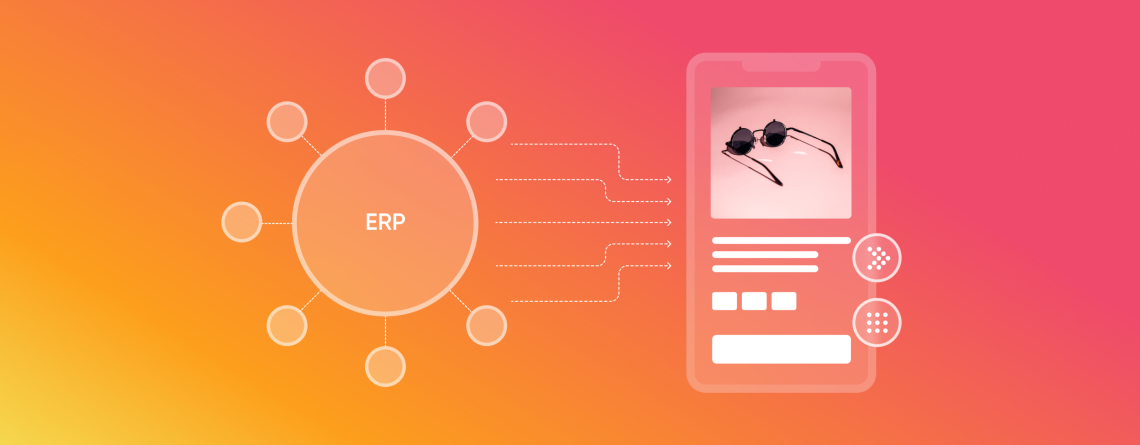
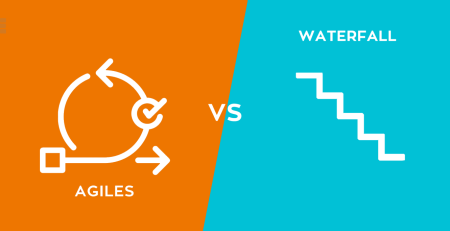
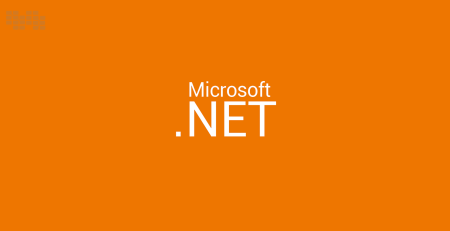

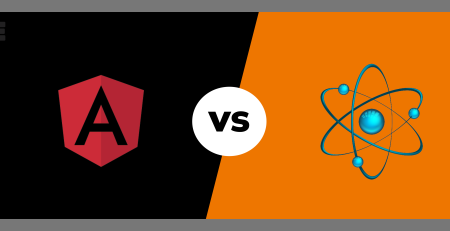
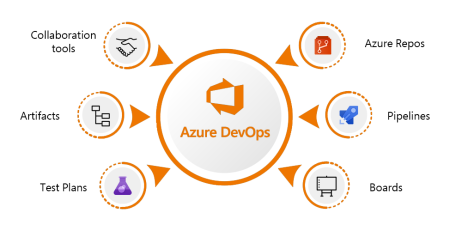




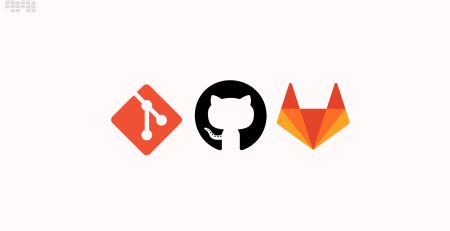
Comments (2)
Can we discuss?
Thanks for sharing the information. In my view business processes are getting complicated day-by-day, so it is of huge importance to adopt ERP Software and ERP System Solutions for Your Business.